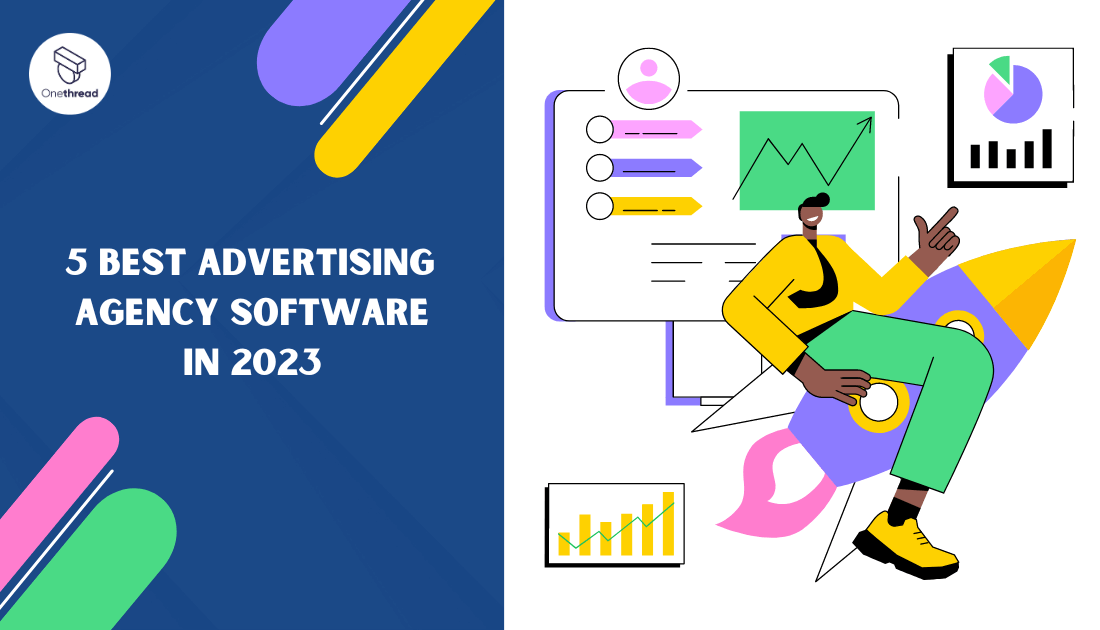Ready to boost your advertising agency’s performance? You’re in the right place. We all know the ad world is fast-paced. Deadlines are tight. Clients want results. So, how do you keep up without losing your cool? The answer is simple: great software.
Today’s advertising agencies need more than just creative minds. They need tech support. No, we’re not talking about fixing computers. We mean software that helps manage projects, track time, and yes, even make better ads. Think of it as your invisible, but super-efficient, office assistant. It never sleeps. It doesn’t take breaks. And it’s ready to work when you are.
Still not convinced? Imagine this. You’re juggling five projects at once. You’ve got meetings, team check-ins, and client calls. How do you keep it all straight? Old-school spreadsheets and email reminders won’t cut it. You need a software tool that organizes your tasks, teams, and timelines in one place. That way, you can focus on what you do best: creating killer ad campaigns.
From project management to automated billing, the right software can change the game. Want to know the best options out there? Keep reading. We’ve rounded up the top 5 software tools that every advertising agency should consider. Get ready to make your work life a whole lot easier.
Quick List of 5 Advertising Agency Software
- Onethread: A comprehensive suite to manage all your creative processes.
- Asana: Streamline project management with easy-to-use task lists and timelines.
- HubSpot: All-in-one tool for marketing, sales, and customer service, tailored for agencies.
- FreshBooks: Simplify invoicing and expense tracking, making financial management a breeze.
- Slack: Enhance team communication with real-time chat and file sharing, all in one place.
Our reviewers evaluate software independently. Clicks may earn a commission, which supports testing. Learn how we stay transparent & our review methodology
Comparison Chart Of Advertising Agency Software
This chart breaks down the unique features of each software tool. It’ll help you see what each one excels at. Choose the one that fits your agency’s needs.
Tool | Project Management | Collaboration | Time Tracking | Financial Management |
 | Basic project management with a marketing focus | Team dashboard, the feedback loop in comments, discussions, and document sharing | In-built time tracker, timesheet, and reporting | Can be customized to track cost. Vendor management. |
 | Built-in templates for projects | Collaboration on tasks and milestones | Third-party time tracking integration | No native financial features |
 | Team dashboard, the feedback loop in comments, discussions, and document sharing | CRM integration for seamless team involvement | No native time tracking | Marketing ROI analytics |
 | Not specialized in project management | Client portal for direct client engagement | Time tracking and billable hours report | Full accounting suite including invoicing, expenses, and reports |
 | Not specialized in project management | Real-time messaging and video conferencing | No native time tracking | No native financial features |
What is Advertising Agency Software?
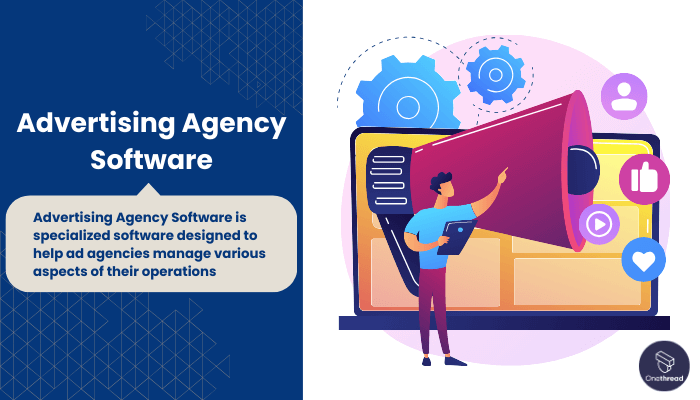
Advertising Agency Software is a specialized software designed to help ad agencies manage various aspects of their operations. Think of Advertising Agency Software as the Swiss Army knife for ad agencies.
Just as a Swiss Army knife has multiple tools like a blade, screwdriver, and scissors all in one, this software combines various functions you need to run your agency efficiently.
It’s like having an extra set of hands that can juggle tasks, keep an eye on the clock, and balance the books, all while making sure everyone on the team is in sync. It’s your all-in-one toolkit for surviving and thriving in the busy world of advertising.
How Advertising Agency Software Can Help Your Business?
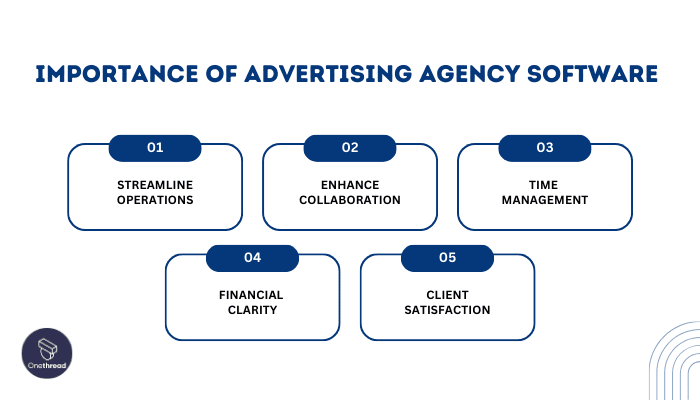
Wondering how Advertising Agency Software can level up your business? This isn’t just another tech fad. It’s a game-changer. Whether you’re a solo freelancer or running a full-fledged agency, this software can offer indispensable benefits.
- Streamline Operations: No more chaotic workflows. Get all your projects and tasks lined up for easy tracking.
- Enhance Collaboration: Keep your team on the same page. Share updates and files effortlessly.
- Time Management: Track time spent on tasks. Know where your hours are going.
- Financial Clarity: Handle invoices, track payments, and manage expenses, all in one place.
- Client Satisfaction: Provide timely updates and meet deadlines, making your clients happy and loyal.
In short, Advertising Agency Software is your one-stop solution for efficiency and excellence.
Key Features to Consider in Advertising Agency Software
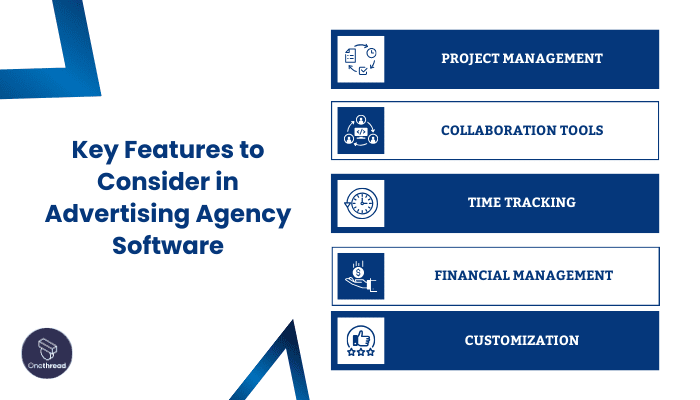
Choosing the right Advertising Agency Software? It’s not just about the price or brand. It’s about the features that meet your needs. Here are the top 5 key features to consider when making your choice.
1. Project Management
Project management is the backbone of any agency. Your software should let you plan, execute, and track projects from start to finish. Look for features like task assignment, deadline setting, and project timelines. This helps you keep a close eye on progress and ensures nothing slips through the cracks.
2. Collaboration Tools
Teamwork makes the dream work, right? Your software should make it easy for team members to communicate and collaborate. Features like real-time chat, file sharing, and team dashboards can be game-changers. They help keep everyone in sync and avoid misunderstandings.
3. Time Tracking
Time is money, especially in the ad world. Your software should include a time-tracking feature. This allows you to monitor how much time is spent on each task or project. It’s essential for billing clients accurately and for evaluating team productivity.
4. Financial Management
Cash flow is the lifeblood of your business. Your chosen software should offer the basic financial tools. These might include invoicing, expense tracking, and payment reminders. Such features help you keep a tab on your financial health, making sure you stay profitable.
5. Customization
Every agency is unique, and your software should be too. Customization features like adjustable dashboards and task fields are important. They allow you to tailor the software to fit your specific needs and workflows.
In a nutshell, the right features can make or break your experience with Advertising Agency Software. Keep these in mind, and you’re on your way to a smoother, more efficient operation.
Top 5 Advertising Agency Software
Looking for the best tools to streamline your advertising agency? The right software can make a world of difference. From project management to client communications, good software has you covered.
Here, we’ve narrowed down the top 5 advertising agency software that are industry favorites. These tools are designed to help you manage tasks, collaborate, and grow your business effortlessly. Read on to find out which one is the best fit for you.
#1. Onethread

Meet Onethread, the go-to software for advertising agencies aiming for the top. Why is it the best? Let’s break it down. Onethread masters project management. Create workflows, assign tasks, and never miss a deadline again. It’s like having a super-organized assistant, but digital. Collaboration is a breeze with its team dashboard. Share updates in real time, and keep everyone in the loop.
But there’s more. Onethread comes with a built-in time tracker. Know where every minute of your day goes. You can focus on creativity and leave the rest to Onethread; Onethread handles the numbers. Plus, it allows you to customize your dashboard the way you like. In short, Onethread isn’t just a tool; it’s your agency’s new best friend.
Overview and key features
On the hunt for an all-in-one solution for your advertising agency? Look no further than Onethread. Touted as the best in the business, Onethread packs a punch with features tailored for ad agencies. Below are the top 5 features that set Onethread apart.
1. Advanced Project Management
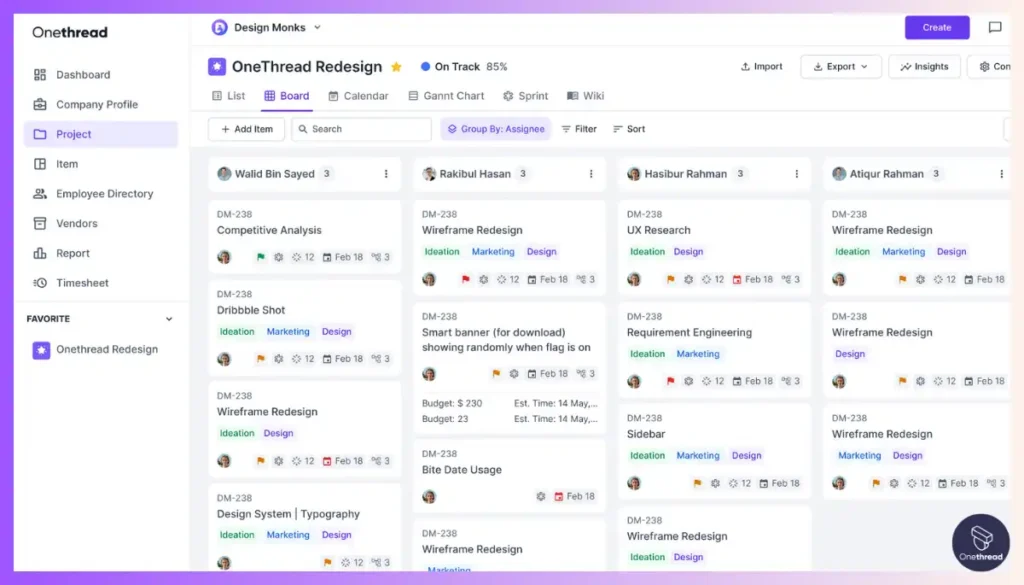
Ever feel like juggling too many balls at once? Onethread’s project management feature is your safety net. Create workflows and allocate tasks with just a few clicks. The software shows you the big picture, so you never miss a deadline. It’s like a GPS for your projects—always guiding you in the right direction.
2. Real-Time Team Dashboard
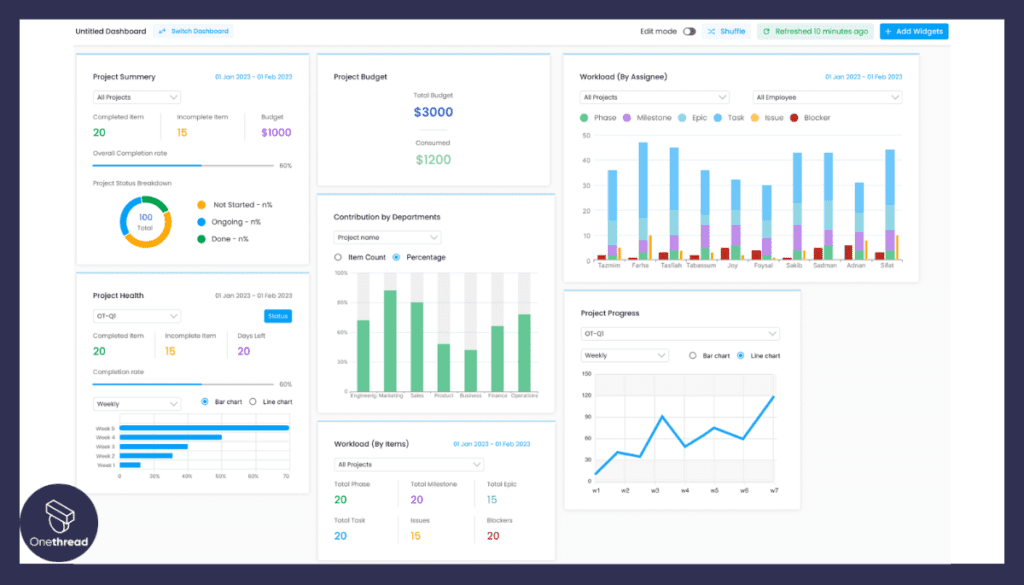
Communication gaps can be costly. Onethread’s team dashboard eliminates this risk. Share updates, files, or even a quick “good job” in real time. This dashboard acts like a virtual meeting room, keeping everyone on the same page without clogging up your email.
3. In-Built Time Tracker
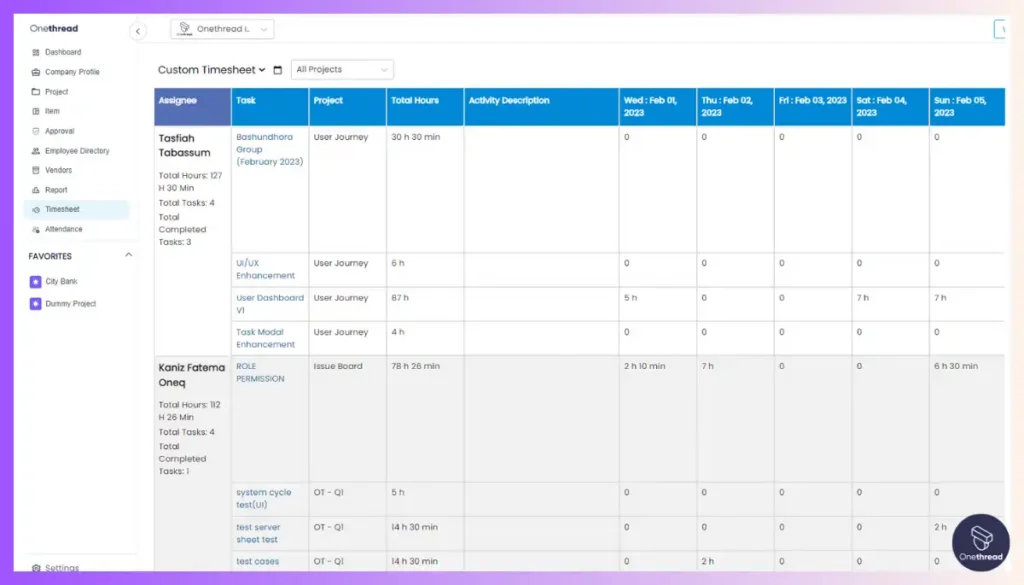
Time slips away fast in a busy agency. Onethread’s time tracker helps you hold onto it. This feature tracks time spent on each task. You can then bill clients accurately and gauge team productivity. No more guesswork, just precise numbers.
4. Financial Management
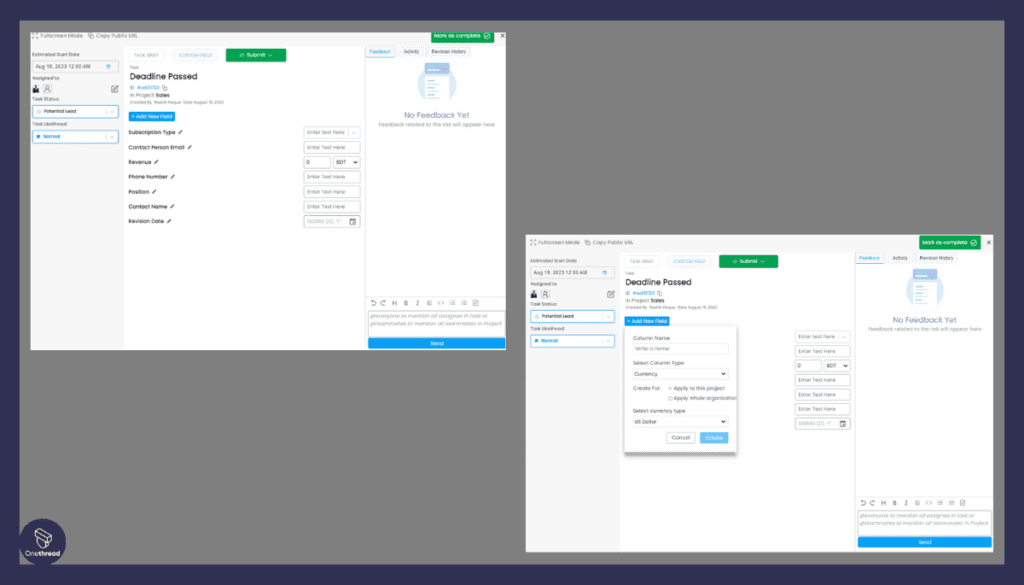
Though Onethread has no dedicated feature for financial management, you can actually customize the workflow to track your cost. You can set payment reminders in advance and also manage your external stakeholders through the vendor management feature.
5. Customizable Dashboards
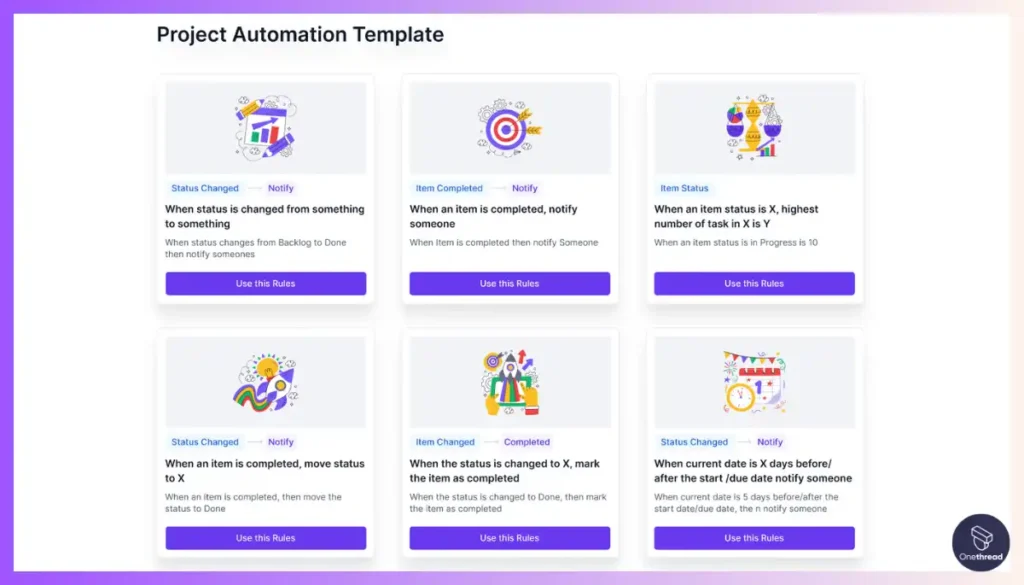
Every agency has its unique needs. Onethread’s customizable dashboards adapt to yours. You can tweak fields and arrange data to suit your workflow. It’s not just software; it’s your agency’s custom-built control center.
Onethread combines top-notch features with a user-friendly interface. It’s not just a tool but a comprehensive solution for your advertising agency. With Onethread, you’re not just managing your work; you’re mastering it.
Pricing plans and options

Thinking about investing in Onethread? Good choice. Let’s talk pricing. Onethread offers three plans to fit various needs and budgets. Here’s a quick breakdown:
1. Free Plan
Perfect for freelancers or small teams just getting started. This plan gives you access to basic project management and collaboration tools. It’s a risk-free way to test the waters and see how Onethread can benefit you.
2. Growth Plan ($3.6/month)
Aimed at growing agencies with expanding teams. For just $3.6 a month, you get more advanced features. These include the built-in time tracker and financial tools like invoicing. If you’re looking to take your operations up a notch, this plan is for you.
3. Scale Plan ($6/month)
Made for agencies that are ready to scale big. Priced at $6 a month, this plan unlocks all features, including customizable dashboards. It also offers premium support to ensure smooth sailing.
Pros and cons
Pros:
- Robust Project Management: Streamline tasks and deadlines with advanced features.
- Real-Time Collaboration: Enhances team communication and keeps everyone on the same page.
- Built-In Time Tracking: Accurate billing and productivity assessment are made easy.
- Financial Tools: Invoicing and payment tracking simplify your financial workflow.
- Customizable: Tailor the dashboard and features to fit your agency’s unique needs.
- Scalable Plans: From freelancers to large agencies, there’s a pricing plan for everyone.
Cons:
- Learning Curve: With so many features, it might take some time to get used to the software.
- Internet Dependency: Being cloud-based, you’ll need a reliable internet connection to access the platform.
#2. Asana
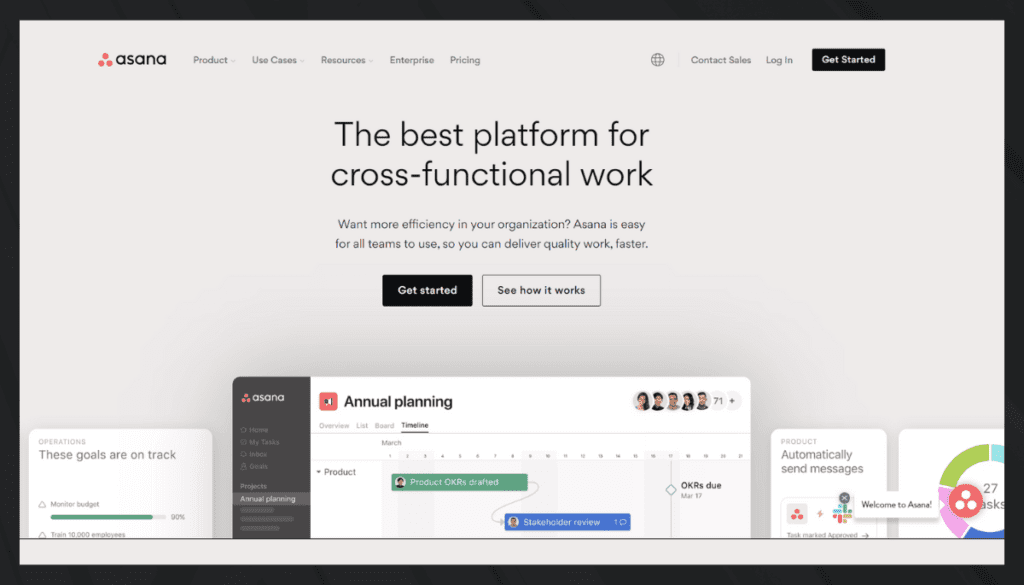
Asana is a powerful and intuitive project management tool designed to help teams streamline their work and achieve better results. With its user-friendly interface and array of features, Asana simplifies task management, project tracking, and team collaboration.
The platform offers a variety of project views, including lists, boards, and timelines, allowing teams to visualize their work and stay on top of deadlines.
Asana’s customizable templates and automation capabilities enable teams to create workflows that match their unique processes. The tool also facilitates communication with features like comments and task assignments.
Whether you’re managing a small team or a large enterprise, Asana provides the tools to organize tasks, track progress, and ensure project success. Its simplicity and versatility make it an essential asset for boosting productivity and achieving project goals.
Asana: A Company Snapshot
Company Valuation
- Asana is a publicly traded company with a notable market capitalization.
- Valuation reflects its position in the project management and work collaboration sector.
Employee Number
- Founded in 2008.
- Employed a substantial team of 1782 globally as of 2023.
- Focused on providing work management and collaboration solutions.
Founding Team
- Asana was co-founded by Dustin Moskovitz and Justin Rosenstein.
- Both co-founders played pivotal roles in shaping Asana’s growth and development.
Features
When it comes to organizing chaos, Asana shines bright. This project management tool is a favorite among advertising agencies, and here’s why. Below, we delve deep into the top 5 features that put Asana on the map.
1. Template-Based Project Management
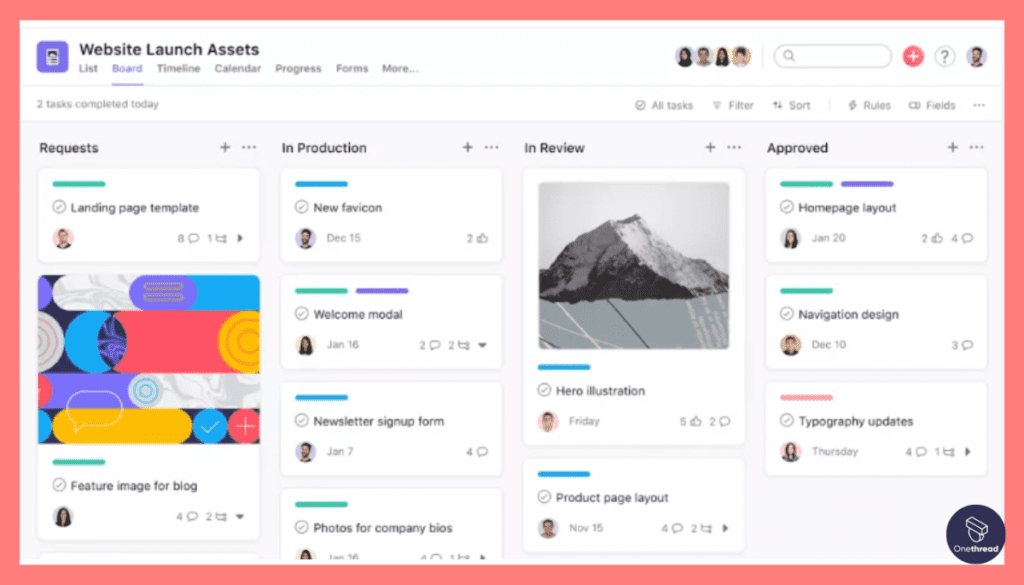
Forget starting from scratch. Asana offers ready-to-go templates that fit various project types. These aren’t just generic templates. They are designed with different industries and project scopes in mind. Just pick a template, make it your own, and you’re off to a flying start. This takes the guesswork out of project setup, making your work process faster and more efficient.
2. Detailed Task Assignment and Milestones
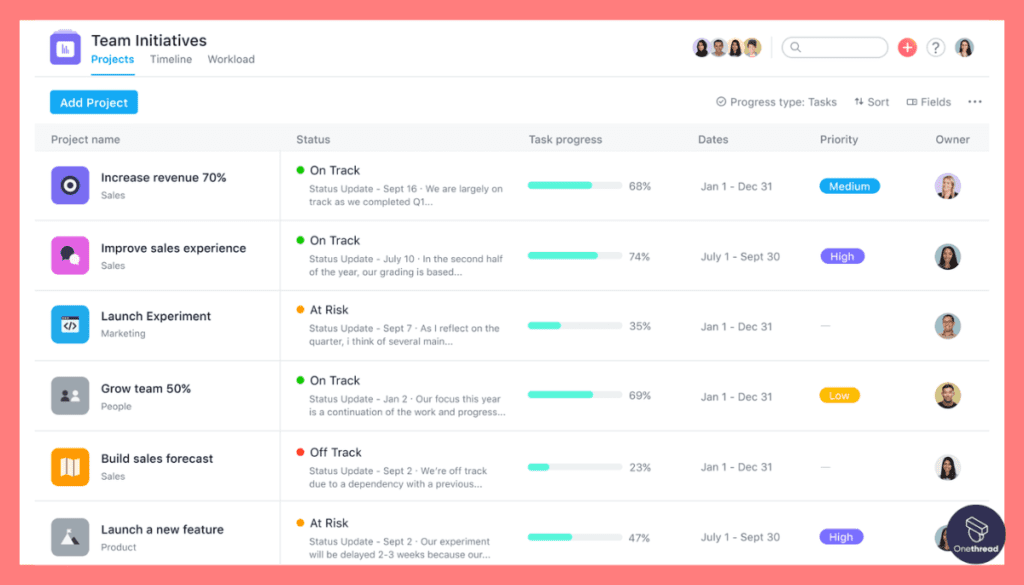
Asana allows you to set detailed tasks and sub-tasks. But it doesn’t stop there. You can set milestones to break down your project into achievable goals. Assign resources, set deadlines, and even attach files to tasks. This 360-degree view of tasks keeps everyone aligned, making it easier to track progress and troubleshoot issues early on.
3. Collaboration Features
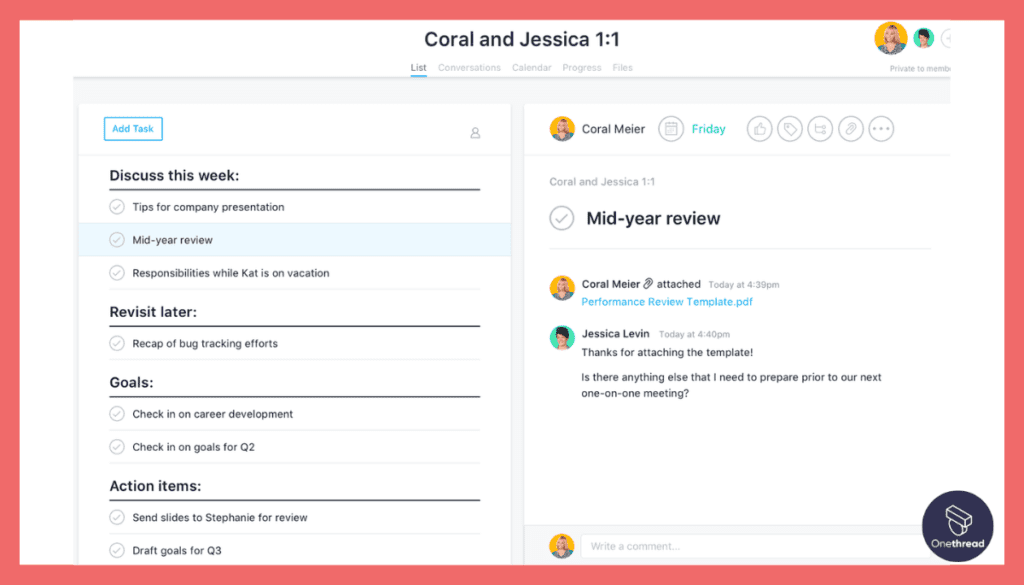
Say goodbye to endless email threads and hello to integrated conversations. Asana allows you to comment directly on tasks. Need to discuss a change? Just tag the team member and chat right where the work is happening. Files can be uploaded, and feedback can be given within the platform. The convenience of having everything in one place boosts efficiency and teamwork.
4. Integration with Third-Party Time Trackers
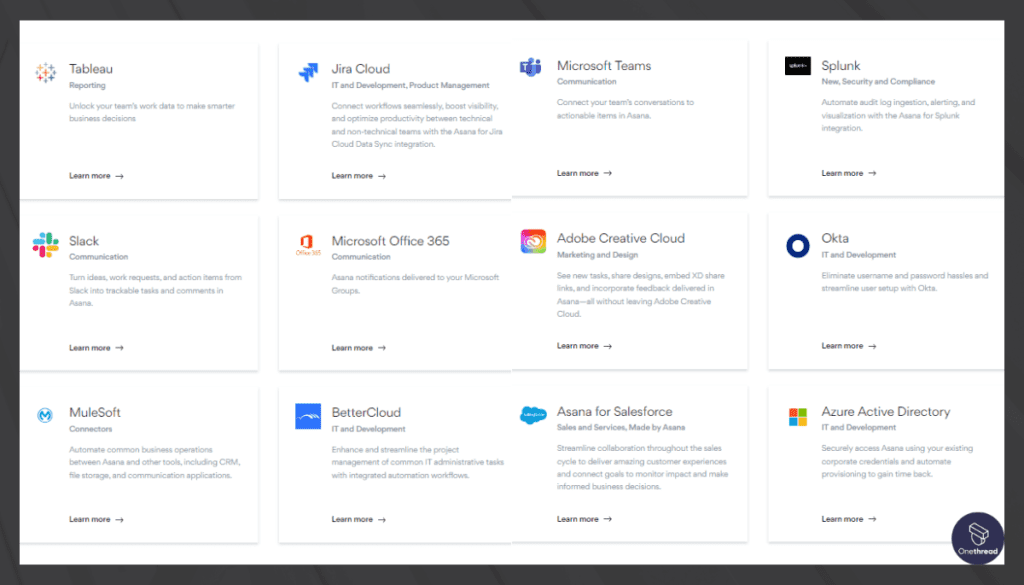
Even though Asana doesn’t have an in-built time tracker, it’s not a dead-end. The platform seamlessly integrates with external time-tracking tools like Toggl or Harvest. This allows you to gather data on how time is spent on each project, a vital metric for any advertising agency aiming for efficiency.
5. Custom Fields and Reporting
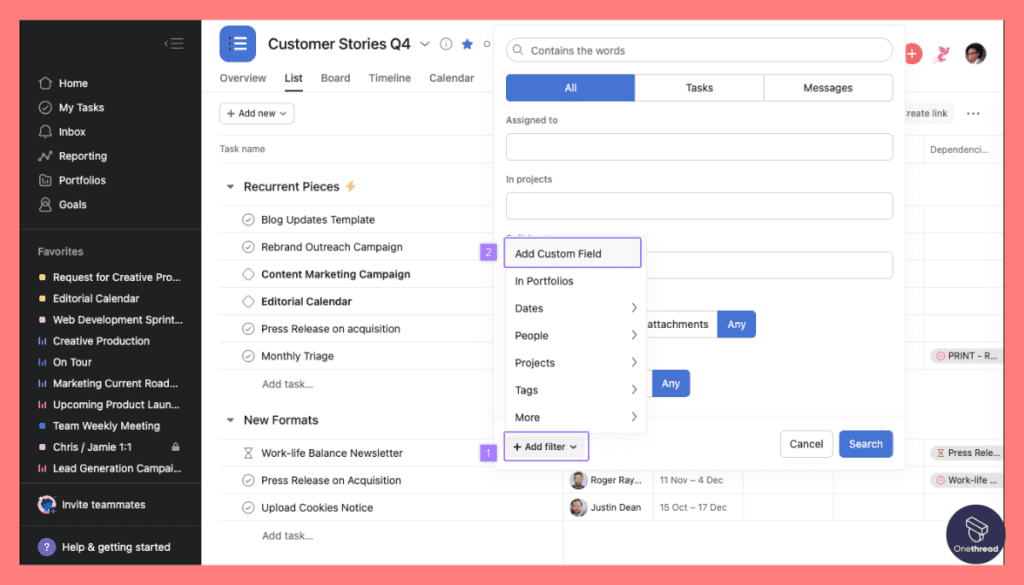
Data is gold, and Asana knows it. With custom fields, you can track exactly what matters to you. Whether it’s project costs or client feedback scores, the custom fields are your playground. The software allows you to run automated reports based on these fields. This turns raw data into actionable insights, helping you make informed decisions.
Pros & Cons
Pros:
- Comprehensive Task Management: More than just to-dos, it’s about total task ownership.
- Collaborative Workspace: Merges tasks and communication smoothly.
- Flexible Integrations: Plays well with other software you’re using.
- Data-driven: Custom fields make reports more insightful.
- Scalable: Expand according to your team’s needs.
Cons:
- No In-built Time Tracking: External integrations are needed for this.
- Feature Overload: Too many features can overwhelm new users.
- Premium Price: The cost can add up for larger teams.
Pricing Plans
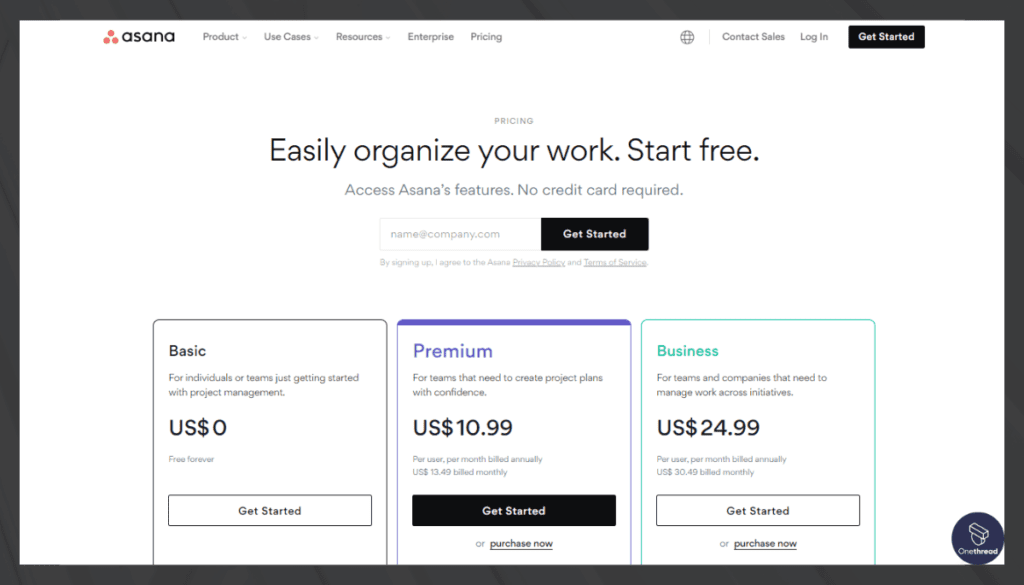
- Basic Plan: Free, ideal for individual users or small teams.
- Premium Plan: $10.99/user/month, added features for growing teams.
- Business Plan: $24.99/user/month, full feature set for large agencies.
Customer Ratings
- G2: 4.3 out of 5 stars
- Capterra: 4.5 out of 5 stars
Our Review
The platform stands out for its feature richness and adaptability, making it a go-to for advertising agencies of all sizes. Its robust feature set tailored for task management and collaboration makes it a strong candidate for the best advertising agency software.
The learning curve and pricing may be a hurdle for some, but the value it delivers in streamlining workflow and improving team collaboration can quickly outweigh these downsides.
#3. HubSpot
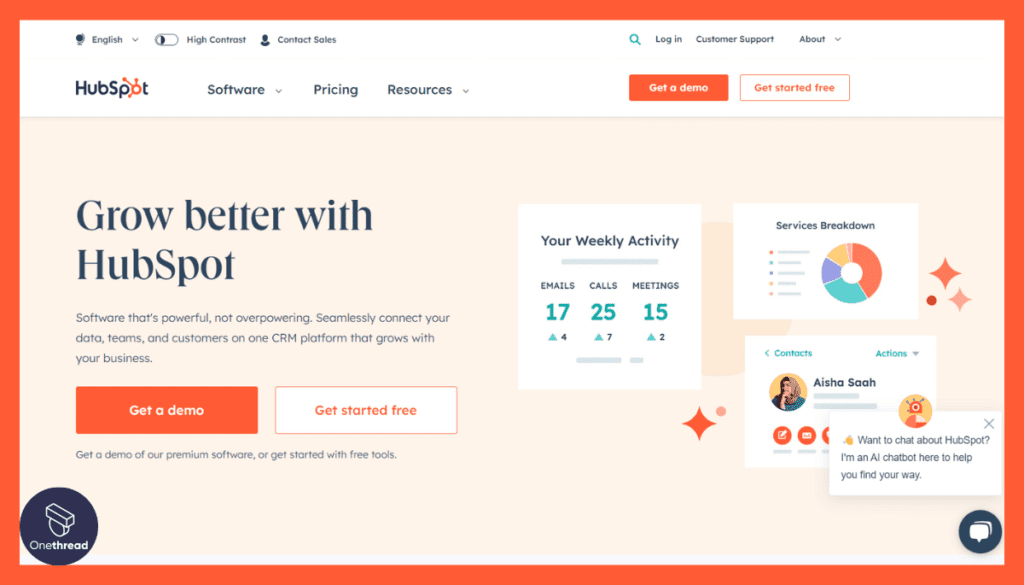
HubSpot is an all-inclusive software for inbound marketing and sales. It empowers businesses to captivate, interact with, and please customers. Thanks to its user-friendly interface and toolbox, HubSpot allows businesses to develop and oversee marketing efforts, follow leads, and cultivate customer connections.
The platform offers features like email marketing, social media management, and analytics to help businesses optimize their marketing efforts.
In addition, HubSpot’s CRM system helps teams organize and prioritize leads and customers, providing valuable insights for sales and marketing strategies. The platform’s integrated approach simplifies processes and fosters collaboration across departments, enhancing overall efficiency.
HubSpot’s commitment to user-friendliness and its all-in-one solution makes it a go-to choice for businesses seeking to streamline their marketing and sales efforts and build strong customer connections.
HubSpot: A Company Snapshot
Company Valuation
- HubSpot is a publicly traded company with a significant market capitalization.
- Valuation reflects its position in the marketing, sales, and customer service sectors.
Employee Numbers
- Founded in 2006.
- Employed a substantial team of around 7000 people globally as of 2023.
- Focused on providing inbound marketing and sales software.
Founding Team
- HubSpot was founded by Brian Halligan and Dharmesh Shah.
- Both co-founders played instrumental roles in shaping HubSpot’s growth.
- Brian Halligan’s marketing expertise and Dharmesh Shah’s technical background contributed to their success.
Features
HubSpot is more than just a buzzword in the advertising world. It’s a versatile platform that accommodates a wide range of agency needs, from CRM and project management to marketing automation. Here’s why HubSpot should be on your radar.
1. CRM with In-Depth Customer Segmentation
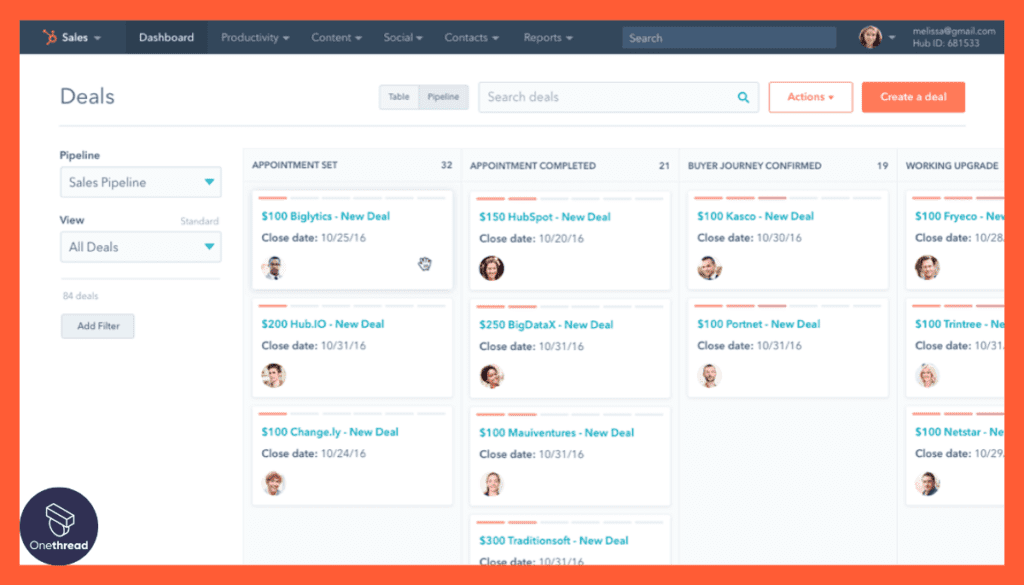
HubSpot’s CRM isn’t just a digital Rolodex. It allows you to segment your clients based on various factors like industry, revenue, or behavior. This enables targeted marketing campaigns and personalized service. Think of it as putting your clients into different rooms, each with services tailor-made for them.
2. Content Management System (CMS)
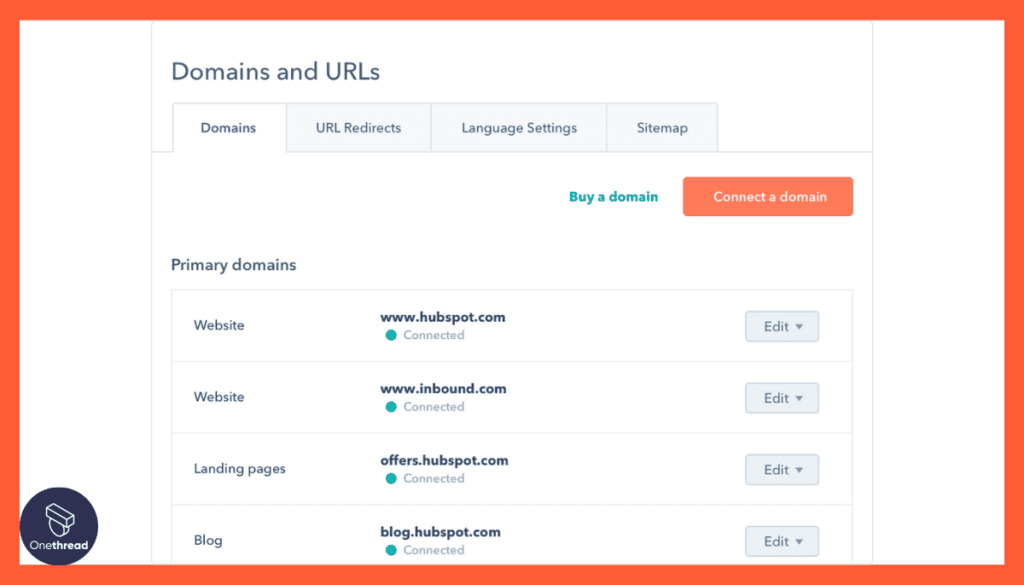
The CMS in HubSpot is a powerhouse. Not only can you create and manage content, but it also offers SEO recommendations. This is vital for advertising agencies that produce a lot of online content. You can focus on creativity, while HubSpot ensures your content meets SEO standards for higher visibility.
3. Email Marketing Automation
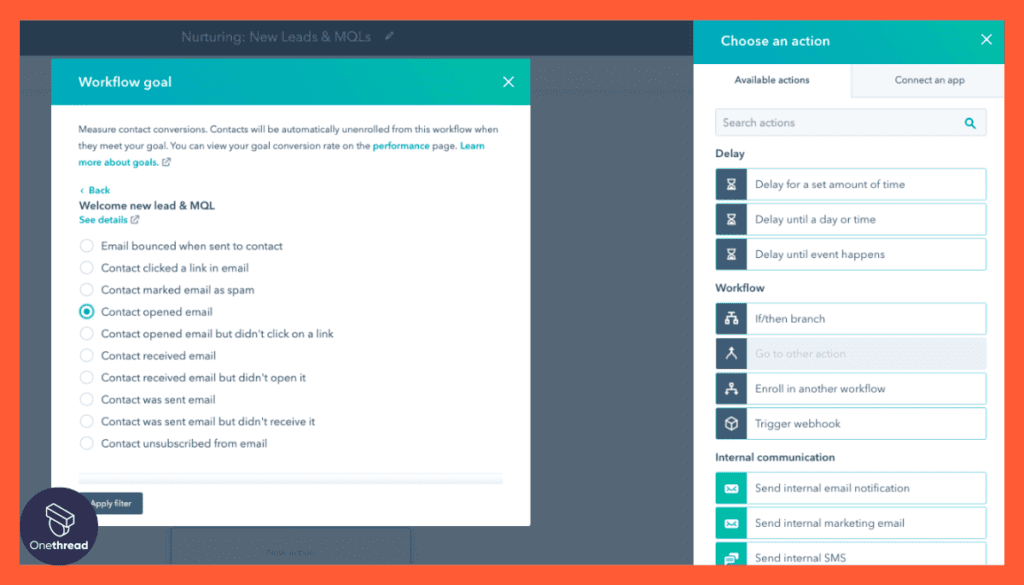
With HubSpot, repetitive email tasks become a thing of the past. You can automate email campaigns based on triggers and sequences. This ensures that you’re not just sending emails, but sending the right emails at the right time. It’s like having an extra employee who works round-the-clock on email marketing.
4. Social Media Dashboard
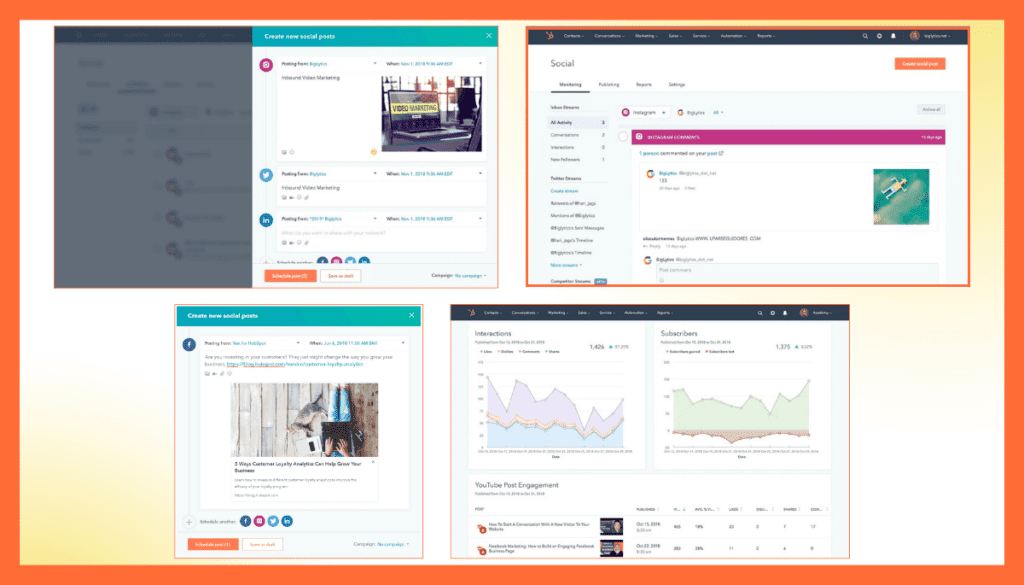
Managing multiple social media accounts? HubSpot’s dashboard integrates them all into one interface. You can schedule posts, analyze engagement, and even respond to messages and comments. It’s your social media command center, giving you a bird’s-eye view of all activities.
5. Analytics and Reporting
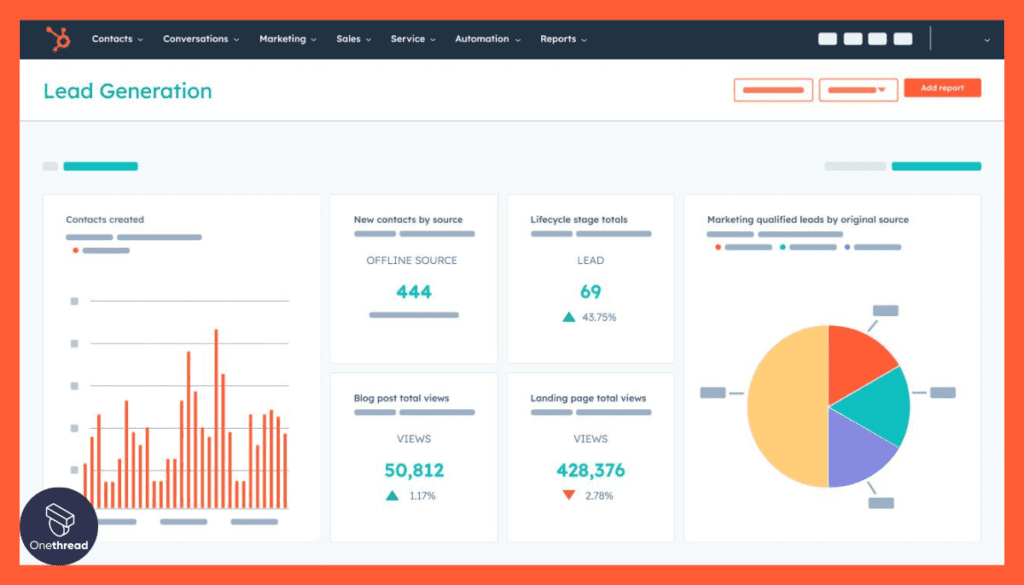
Data is gold in advertising, and HubSpot knows it. Their analytics tool gives you a 360-degree view of how your campaigns are performing. This data isn’t just numbers; it’s actionable insights that can steer future advertising strategies. Make decisions not on hunches but solid data.
Pros & Cons
Pros:
- All-in-One Platform: Manages CRM, content, emails, and more.
- Highly Customizable: Tailor the tool to fit your specific needs.
- Robust Analytics: Turn raw data into actionable insights.
- User-Friendly Interface: Easy to navigate despite the plethora of features.
- Great Community Support: Extensive documentation and community forums for help.
Cons:
- Pricey for Small Agencies: The cost can be prohibitive for smaller outfits.
- Overwhelming Features: Some may find the extensive options confusing.
- Steep Learning Curve: Requires time and training to maximize use.
Pricing Plans
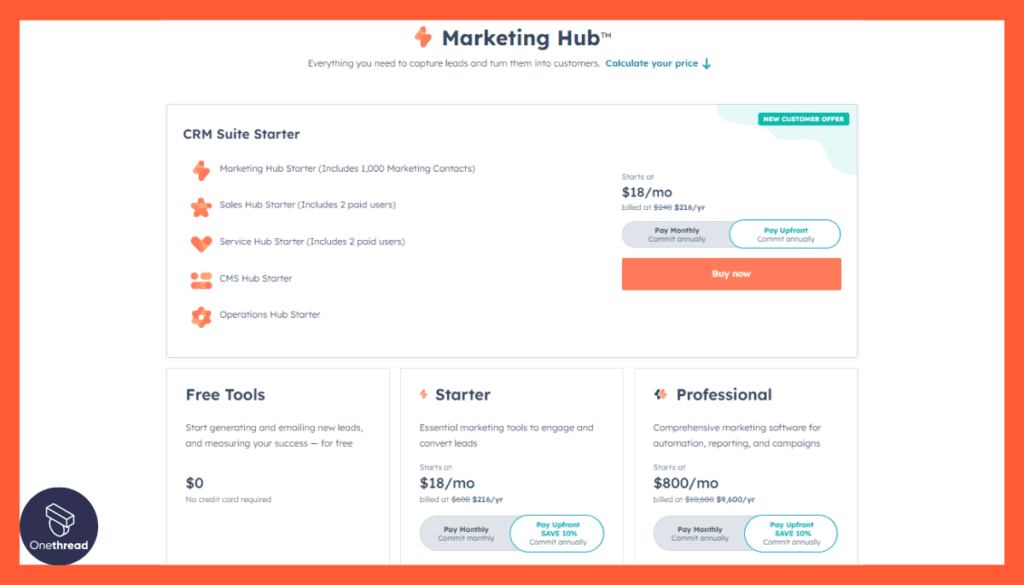
- Starter Plan: $50/month, includes basic CRM and marketing tools.
- Professional Plan: $400/month, includes advanced automation and analytics.
- Enterprise Plan: $1,200/month, covers extensive customization and premium support.
Customer Ratings
- G2: 4.3 out of 5
- Capterra: 4.3 out of 5
Our Review
Its reputation in the industry speaks for itself. The platform serves as a Swiss Army knife for advertising agencies, offering a range of vital services under one roof. Its main drawback is its complexity and price, making it a less attractive option for smaller agencies.
However, for those willing to invest time and resources, HubSpot provides an all-encompassing solution for advertising agency needs.
#4. FreshBooks

FreshBooks is a cloud-based accounting software designed for small businesses and freelancers to manage their finances with ease. With its intuitive interface, FreshBooks simplifies tasks like invoicing, expense tracking, and time management.
Users can create professional-looking invoices, track expenses, and generate financial reports effortlessly. The platform also offers features like automated payment reminders, online payment options, and receipt scanning, making it convenient for businesses to get paid faster.
Additionally, FreshBooks helps users manage their projects and track billable hours, ensuring accurate billing for client work. With its user-friendly design and essential accounting tools, FreshBooks is an ideal choice for those looking for a hassle-free solution to manage their financial tasks and keep their business organized.
FreshBooks: A Company Snapshot
Company Valuation
- FreshBooks is a privately held company, so its exact valuation might not be publicly disclosed.
- The valuation would reflect its performance in the accounting and invoicing software sector.
Employee Numbers
- Founded in 2003.
- Employed a team of around 700 people.
- Focused on providing cloud-based accounting and invoicing solutions.
Founding Team
- FreshBooks was founded by Mike McDerment.
- Mike McDerment’s leadership played a key role in shaping FreshBooks’ growth and development.
Features
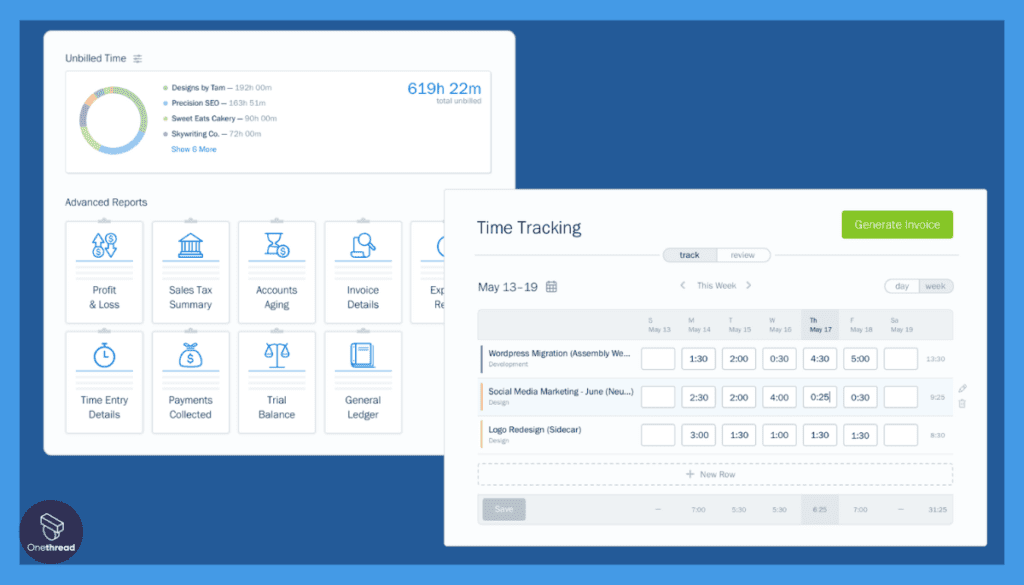
FreshBooks is a gem for advertising agencies that want to focus more on creative work and less on tedious paperwork. Best known for its accounting prowess, FreshBooks also offers solid project management features. Let’s dive into what makes it special.
1. Time-Tracking Feature
One of FreshBooks’ standout features is its time-tracking capability. It enables you to log hours spent on different tasks, offering a clear picture of productivity. This feature helps in billing clients accurately and also aids in internal resource allocation. Imagine a stopwatch that not only times you but also tells you how well you used those hours.
2. Invoicing and Expense Management
Billing clients is a breeze with FreshBooks. Create and send invoices that can be customized to fit your agency’s branding. And it doesn’t stop there. The software lets you track and categorize expenses, streamlining your financial records. Think of it as a financial advisor sitting on your computer, always ready to help.
3. Collaboration Tools
FreshBooks includes easy-to-use collaboration tools. You can share project updates, timelines, and documents all within the platform. This avoids the fuss of back-and-forth emails and keeps your team on the same page. In FreshBooks, your project hub and financial dashboard live under the same roof.
4. Automated Follow-ups
Chasing payments is time-consuming. FreshBooks automates this by sending polite reminders to clients about due invoices. It’s like having a courteous collections agent who works 24/7, ensuring that you get paid on time.
5. Detailed Reporting
FreshBooks provides detailed financial reports, including profit and loss statements. This helps in making informed business decisions. Your financial health, client-related metrics, and expense summaries are just a click away. You’re not just collecting data; you’re using it to make smarter choices.
Pros & Cons
Pros:
- Effortless Invoicing: Customizable and easy to send.
- Time-Tracking: Accurate billing and resource allocation.
- Built-in Collaboration: Keeps the team on the same page.
- Automated Reminders: Ensures you get paid on time.
- Solid Reporting: Makes sense of your financial data.
Cons:
- Limited Advanced Features: Not as comprehensive as some competitors.
- Focus on Accounting: This may not fulfill all project management needs.
- Pricey Add-Ons: Extra features can add up.
Pricing Plans
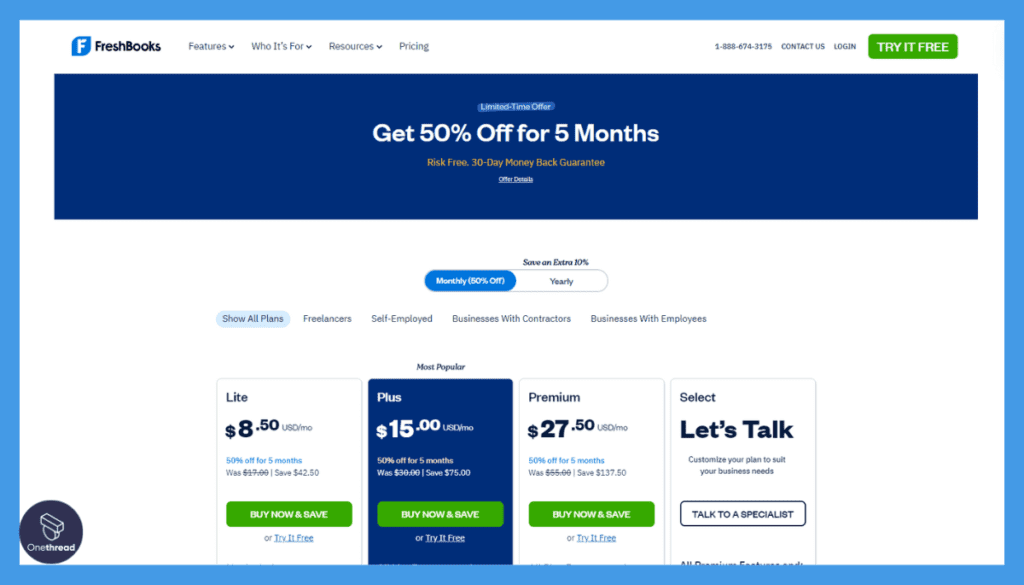
- Lite Plan: $15/month for basic accounting and time tracking.
- Plus Plan: $25/month for unlimited clients and added features.
- Premium Plan: $50/month for more team members and premium support.
Customer Ratings
- G2: 4.5 out of 5
- Capterra: 4.5 out of 5
Our Review
It has a proven track record. Its strengths lie in accounting and basic project management, making it ideal for smaller agencies. While it might not offer an all-in-one solution like some other platforms, it excels at what it does provide.
For those looking to bring their accounting and invoicing under control, while also gaining some project management capabilities, FreshBooks is a solid choice.
#5. Slack
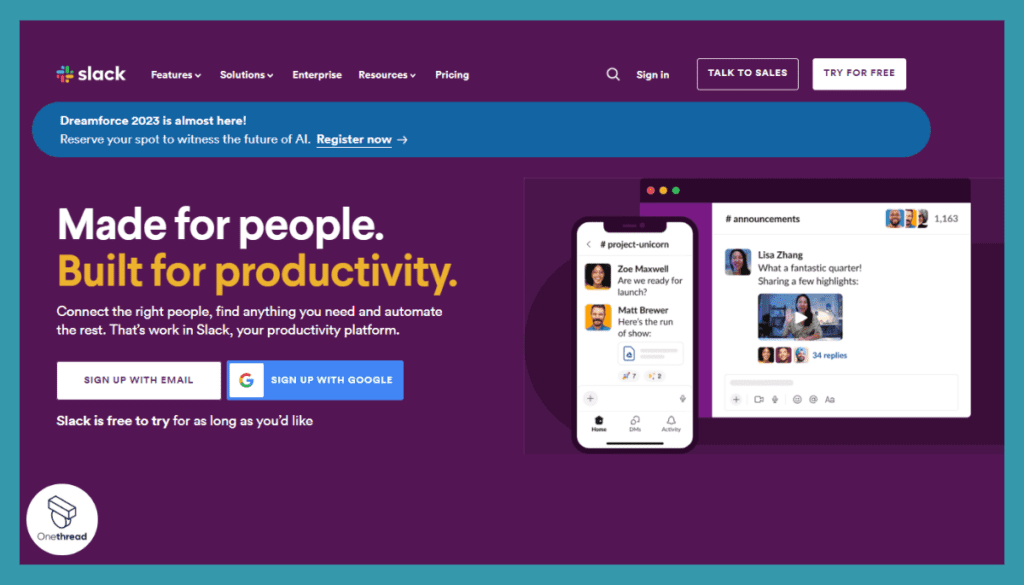
Slack is a widely used team communication and collaboration platform that simplifies workplace communication. It offers real-time messaging, file sharing, and integrations with various tools, streamlining team communication and enhancing productivity.
With its user-friendly interface, Slack enables teams to create dedicated channels for projects, departments, or topics, making it easy to organize discussions and keep everyone on the same page.
Users can share files, conduct video calls, and search for information across conversations quickly. Slack also supports integrations with third-party apps, allowing teams to bring their favorite tools directly into the platform.
Whether you’re working in a small startup or a large enterprise, Slack’s efficient communication features foster collaboration and help teams stay connected in a dynamic and efficient manner.
Slack: A Company Snapshot
Company Valuation
- Slack is a product of Salesforce, a publicly traded company.
- Valuation details might not be specified solely for Slack.
Employee Numbers
- Founded in 2009.
- Operated by the team at Salesforce, which had 2500+ employees as of 2023.
- Focused on providing team collaboration and communication tools.
Founding Team
- Slack was founded by Stewart Butterfield, Eric Costello, Cal Henderson, and Serguei Mourachov.
- The combined expertise of the co-founders contributed to the success of Slack.
Features
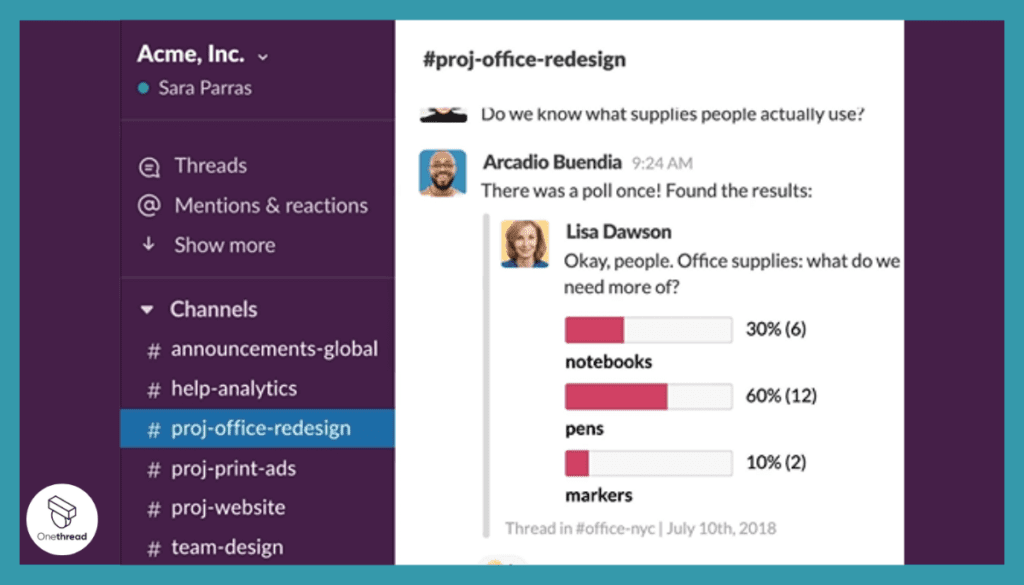
Slack might not be the first name that comes to mind for advertising agency software, but don’t overlook it. While not a complete all-in-one solution, its focus on communication and integration makes it a must-have. Let’s explore its features.
1. Real-Time Messaging
Slack’s real-time messaging cuts through the clutter. Say goodbye to endless email chains and get instant feedback instead. Team chats, direct messages, or channel-based conversations make communication seamless. It’s as if your entire team is in a single room, able to hash things out instantly.
2. File Sharing and Storage
Sharing is caring, and Slack makes it easy. Drag and drop files right into a chat to share with anyone. Versions are tracked, and everything is searchable. Think of it as your project’s digital filing cabinet that’s accessible at all times.
3. App Integrations
This is where Slack shines. It seamlessly integrates with many other tools, such as Google Drive, Asana, and Salesforce. No more switching between tabs. It’s like having your whole toolkit in one easy-to-access drawer.
4. Video Conferencing
Yes, Slack also offers video conferencing. Hold one-on-one chats or team meetings with up to 15 participants. Screen sharing makes collaborative sessions effective. It’s as good as in-person meetings but without the commute.
5. Customizable Workflows
Automate routine tasks within Slack using its workflow builder. From auto-responding to new project requests to setting up daily stand-ups, it’s all doable. Imagine a virtual assistant that takes care of mundane tasks, letting you focus on what really matters.
Pros & Cons
Pros:
- Easy Communication: Real-time messaging streamlines work.
- Rich Integrations: Works well with other tools you already use.
- File Sharing: Keeps all your important files in one place.
- Flexibility: Customizable to fit your agency’s needs.
- Strong Security: Ensures your data stays safe.
Cons:
- Not an All-in-One: Missing some features like in-depth analytics.
- Can Get Noisy: Channels can be distracting.
- Price Per User: Costs can add up with larger teams.
Pricing Plans
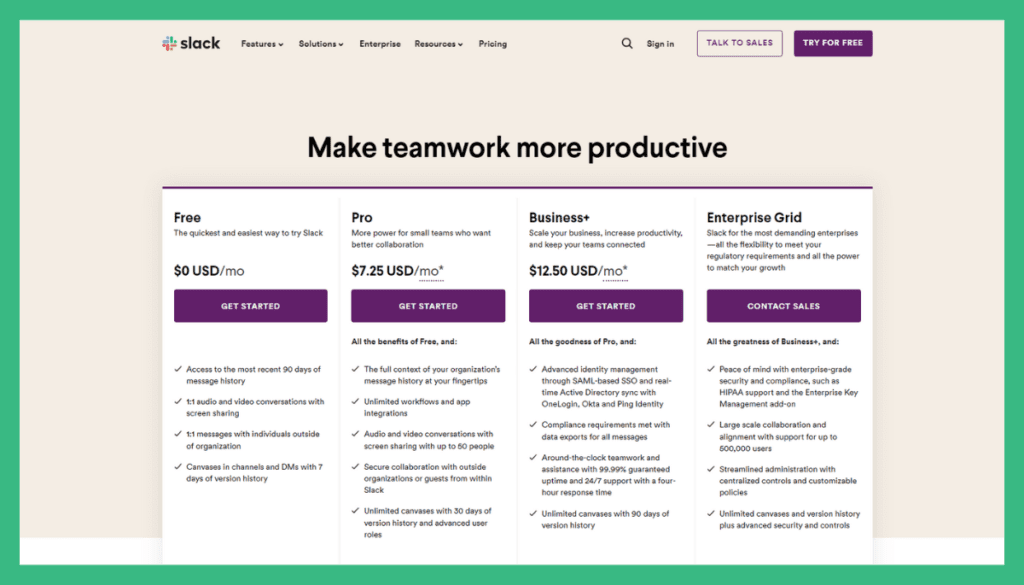
- Free Plan: Limited features but good for small teams.
- Standard Plan: $6.67/user per month with added functionalities.
- Plus Plan: $12.50/user per month for full feature set.
Customer Ratings
- G2: 4.3 out of 5
- Capterra: 4.6 out of 5
Our Review
Its strong reputation precedes it. It excels at what it’s designed for—communication and integration. While it may not be a full-fledged advertising agency tool with in-built analytics or project management, its robust features make it indispensable for team collaboration.
Slack is perfect for agencies looking to streamline communications and integrate with other platforms effortlessly.
Getting the Most Out of Advertising Agency Software
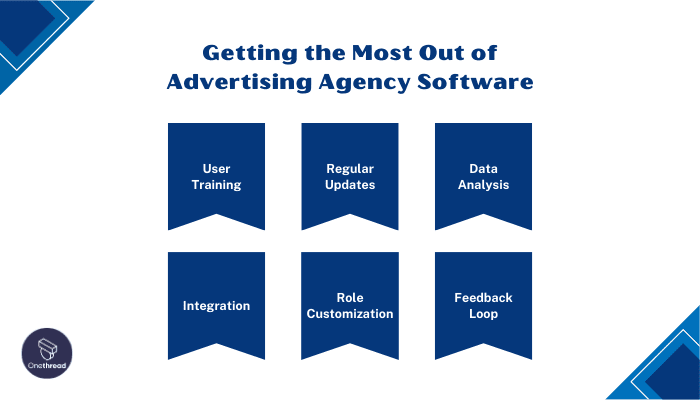
To fully leverage advertising agency software, you need more than just a list of features. Knowing best practices can take your team’s efficiency to the next level. Here’s how to get the most bang for your buck.
Best Practices:
- User Training: Ensure all team members are trained in using the chosen software. This helps in fully utilizing its features.
- Regular Updates: Keep the software up to date for performance and security.
- Data Analysis: Use built-in analytics tools to measure KPIs and adjust strategies accordingly.
- Integration: Integrate with other tools you’re already using. This minimizes jumping between platforms.
- Role Customization: Assign features based on roles within the team. Not everyone needs access to all features.
- Feedback Loop: Collect feedback from users to identify what’s working and what needs improvement. Adapt as you go.
With these best practices, you’ll get more value out of your advertising agency software.
Summary
Advertising agency software is a game-changer for teams looking to streamline tasks and boost productivity. Whether it’s project management, real-time communication, or data analysis, these tools offer a centralized hub for all your needs.
Investing in the right software can make your work more efficient, allowing you to focus on creativity and delivering outstanding results to clients.
FAQs
Is It Worth the Investment?
Yes, the initial investment in good software can lead to long-term gains in productivity and cost efficiency.
Can I Integrate Other Tools with It?
Most advertising agency software offers integrations with other popular tools like Slack, Google Drive, and CRM systems.
How Secure is Advertising Agency Software?
Security measures vary from software to software. Always check the vendor’s security policy, but most reputable ones offer high-level encryption and data protection.
Is There a Learning Curve?
Most software comes with a user-friendly interface, and vendors often offer training and support. Some learning curve is normal but is generally worth the long-term benefits.
Can I Customize Features?
Many software options allow customization. You can often add or remove features based on the unique needs of your agency.
